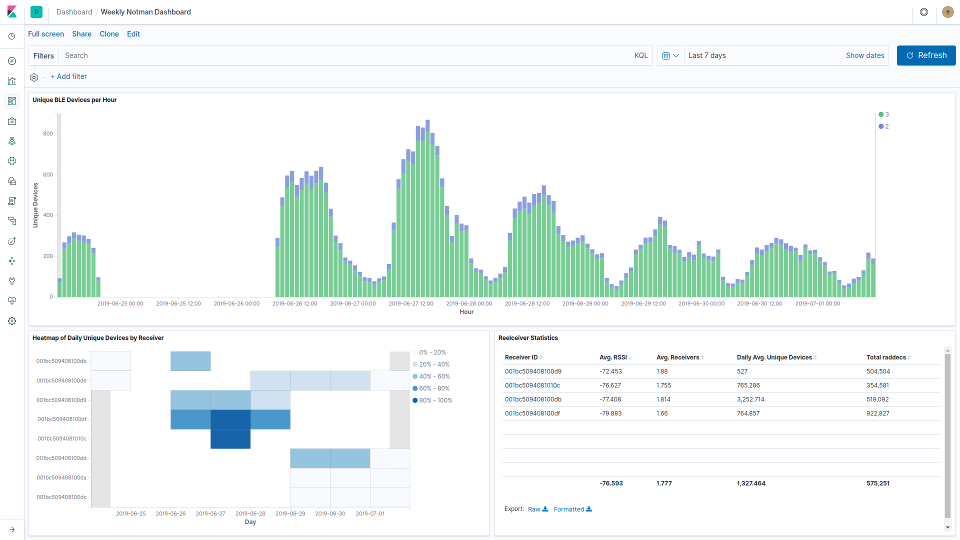Sample Solution Overview
For any business operating in the physical world and maintaining competitiveness through efficiencies and/or experiences, this Sample Solution demonstrates how Internet of Things (IoT) technologies are used to automatically collect, contextualize, and report data to continuously optimize what matters to their employees, clients and, inevitably, to their bottom line. Unlike manual data collection methods or application-specific solutions, this Sample Solution provides a continuous source of data (who/what is where/how) that can be freely consumed by any current or future applications thanks to a technology-agnostic open architecture based on web standards.
Please see the IoT Digitise any Physical Space – Sample Solution page for more information on how the Sample Solution works.
The Sample Solution showcases the following technologies: BLE RTLS (Bluetooth Low Energy Real-Time Location System) and Kibana (a data visualization tool for large datasets), described in subsequent sections.




